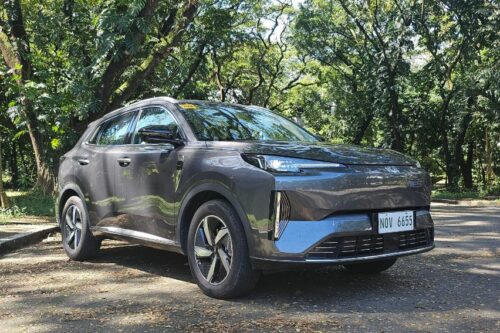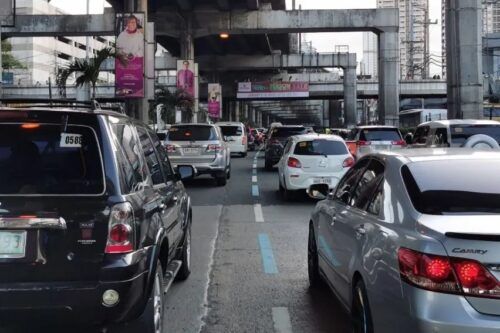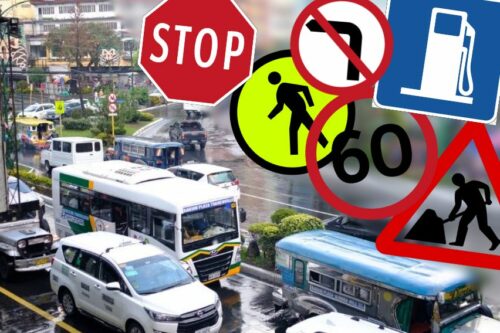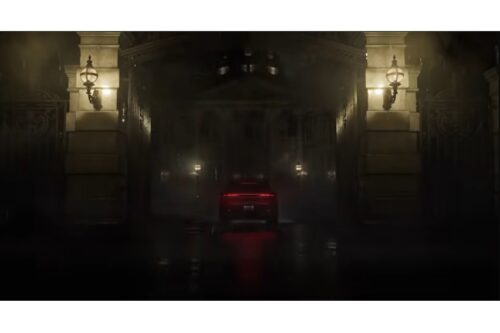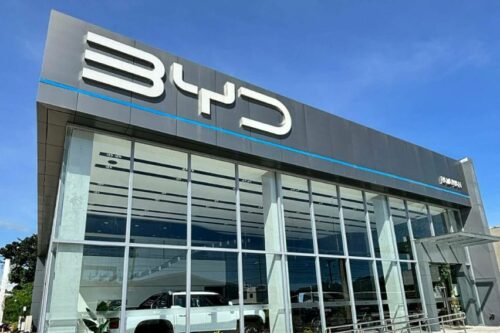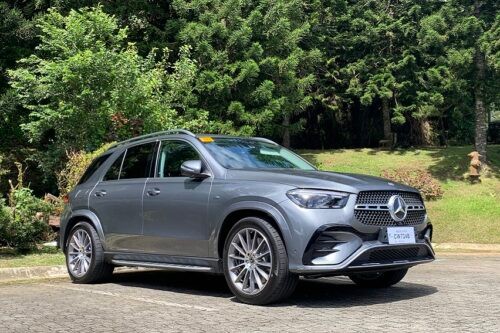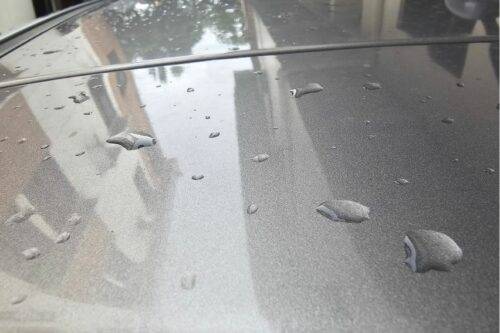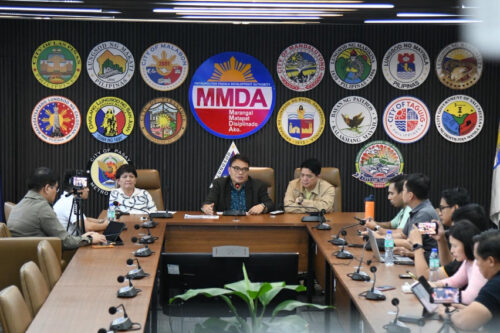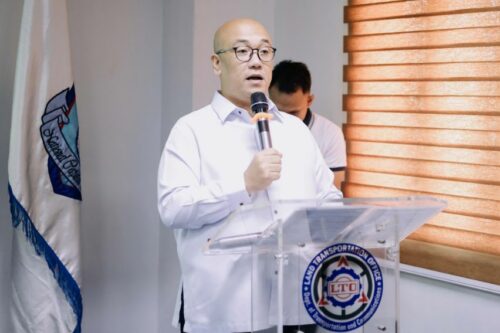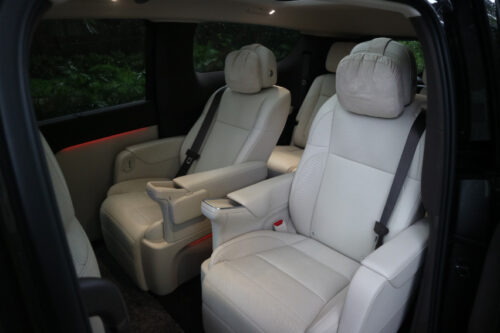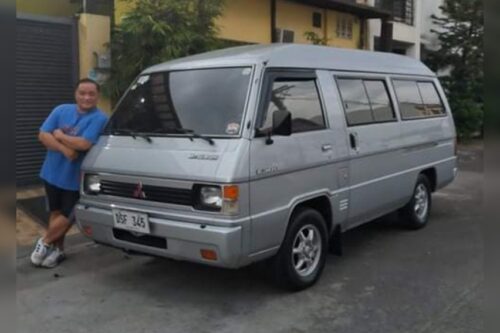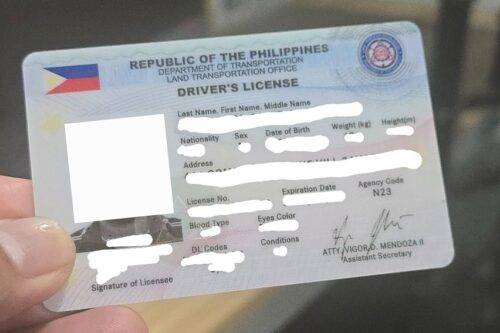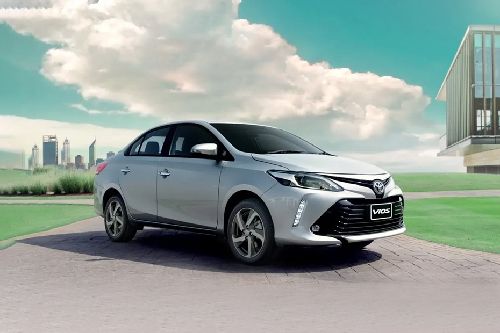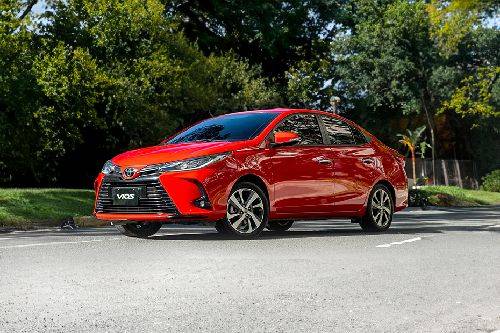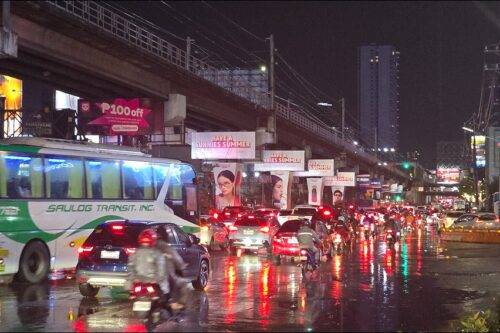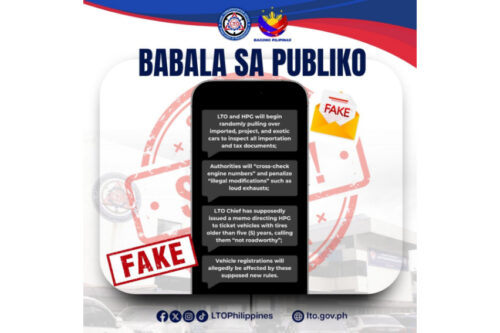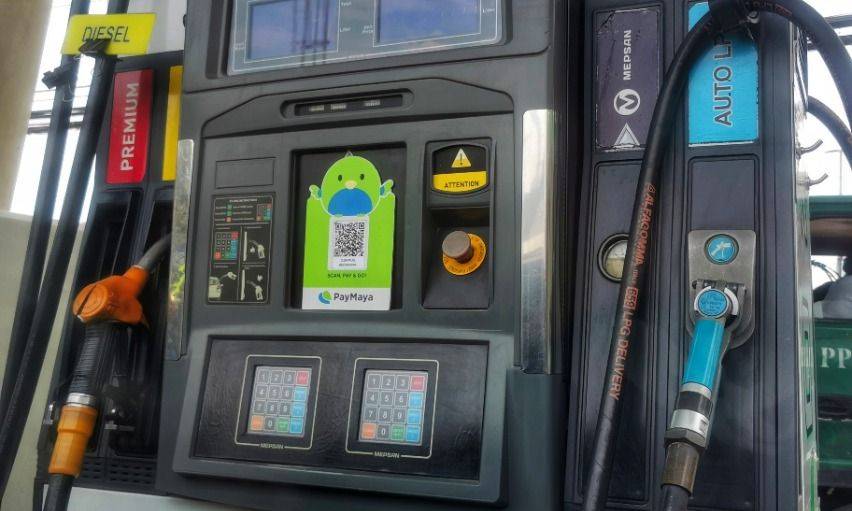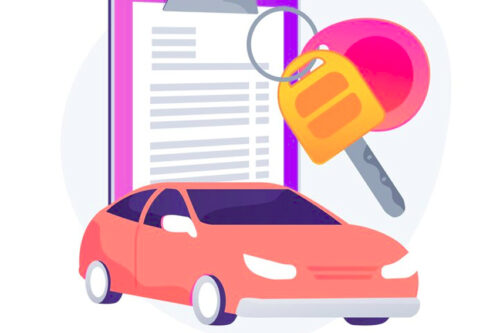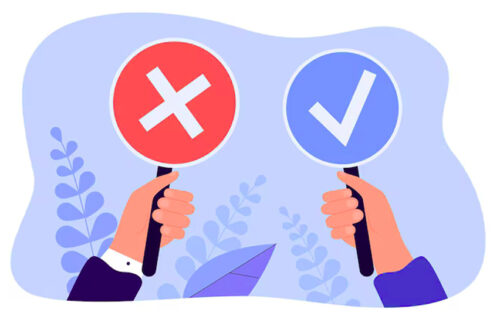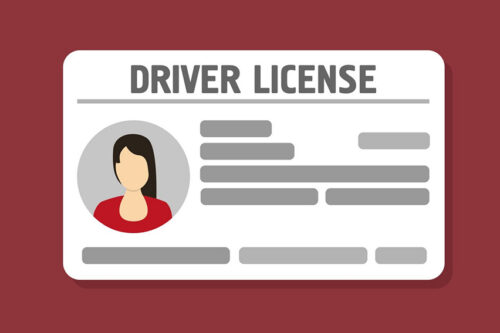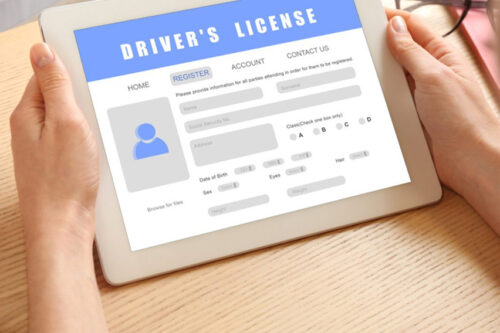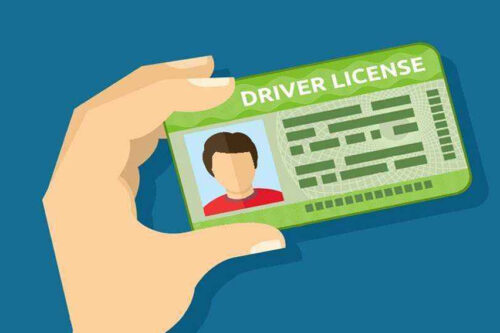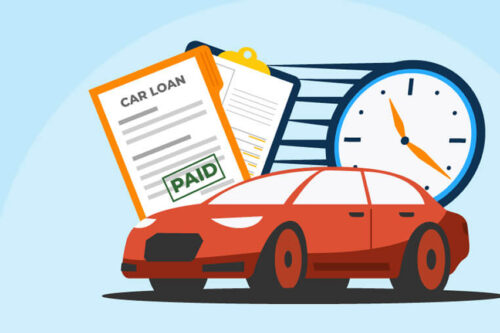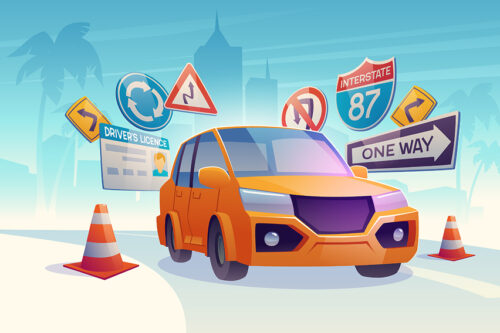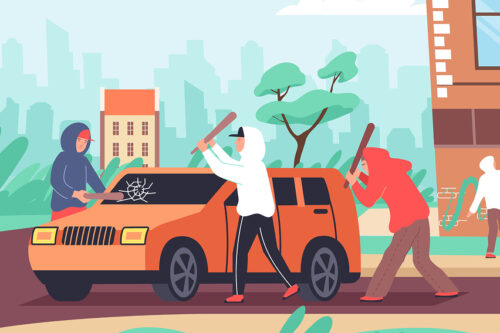The 2023 Guide to MMDA Number Coding in the Philippines
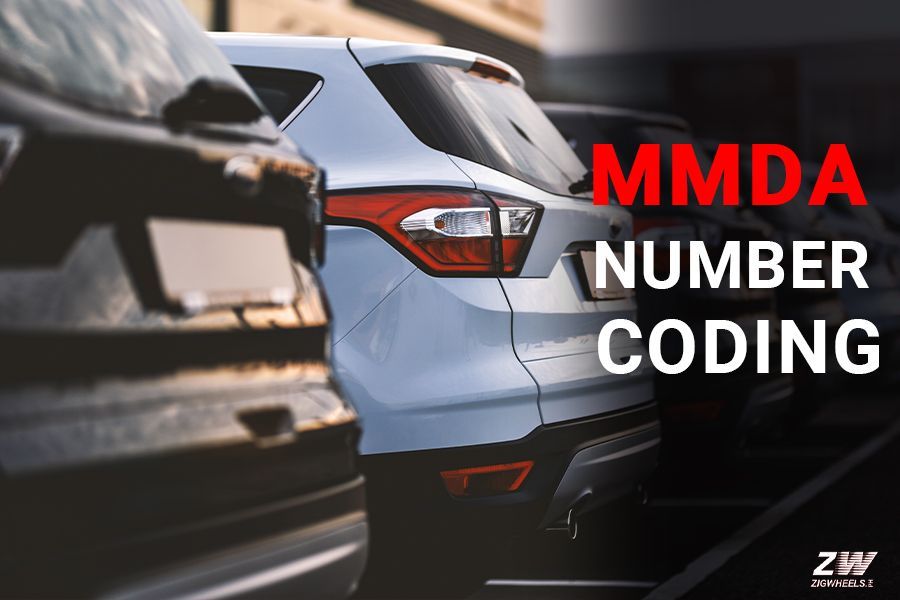
- KEY TAKEAWAYS
- What is the MMDA number coding scheme?
- Is the Number Coding in effect now?
- Which roads in Metro Manila have number coding in effect?
- Who are exempted from the number coding?
- How can I apply for the exemption?
- Number coding reinstated in August 15, 2022
- What time is the start of coding in Metro Manila?
- Number coding rules in the NCR
- Number coding in Alabang
- Number coding in Makati City
- Number coding in Quezon City
- Number coding in Pasig City
- Number coding in Pasay City
- Number coding in Paranaque
- Number coding in Mandaluyong City
- Number coding in Manila City
- Number coding in Valenzuela City
- Number coding in Taguig City
- Number coding in San Juan City
- Number coding in Caloocan City
- Final Words
Metro Manila drivers of past and present are familiar with the term "number coding," but what does it really mean?
KEY TAKEAWAYS
When is the number coding policy effective?
MMDA began the reimplementation of the Unified Vehicular Volume Reduction Program (UVVRP) on Monday, August 15, 2022 to help ease the traffic in the metro during window hours.Which roads in Metro Manila have number coding in effect?
Roads covered by the number coding include EDSA, C5, C6, South Luzon Expressway, Shaw Boulevard, Roxas Boulevard, Ortigas Avenue, and Marcos Highway.Is there coding in Skyway in 2023?
The Metro Manila Skyway is privately owned, and therefore is not covered by the number coding scheme.Is there number coding in Marcos Highway?
The number coding rule covers major thoroughfares such as Marcos Highway, from Monday to Friday, from 7 a.m to 10.am and 5 p.m. to 8 p.m..Is there number coding in EDSA?
The number coding rule covers major thoroughfares such as, yes, EDSA.Is there coding in Makati in 2023?
Since 2022, Makati City implements its own number coding scheme that’s effective from Monday to Friday, 7 a.m. to 7 p.m.How much is the penalty for coding violations?
Violating the MMDA's number coding scheme has a P300 fee associated with it.Who is exempted from number coding?
Transport network vehicle service (TNVS) units, public utility vehicles (PUVs), commercial vehicles transporting essential goods, and utility vehicles like garbage trucks are exempted from the rule. PWDs are also exempted.Can I pay an MMDA violation online?
Fines for number coding scheme violation with the MMDA can be settled remotely through GCash, PayMaya, and Grabpay.How do I know if my plate number is coding?
Every Monday, certain highways are off-limits to license plates with the numbers 1 and 2. The same rules apply on Tuesdays for plates 3 and 4, Wednesdays for plates 5 and 6, Thursdays for plates 7 and 8, and Fridays for plates 9 and 0.Are senior citizens exempted from number coding?
Only in Makati City, as it is mentioned in the Makati ordinance, cars that are transporting senior citizen Blu Card holders as drivers or passengers are exempted from the rule.Let's find out.
What is the MMDA number coding scheme?
Formally known as the modified Unified Vehicular Volume Reduction Program (UVVRP), the rule prohibits private motor vehicles from traveling on metro roads during certain weekdays, which correspond with the final number of a vehicle's plate number.
Going by UVVRP rule, cars whose plate numbers end with 1 and 2 are prohibited to travel during Mondays. The same logic applies until Fridays, which prohibit cars with plate numbers ending with 9 and 0.
Enforced by the Metro Manila Development Authority (MMDA), the number coding aims to lower the number of cars on the road and ease congestion.
The rule was briefly suspended at the onset of the COVID-19 pandemic in 2020. In 2021, the number coding was reinstated to cover hours from 5 p.m. to 8 p.m. along major roads, from Monday to Friday expect holidays only.
Is the Number Coding in effect now?
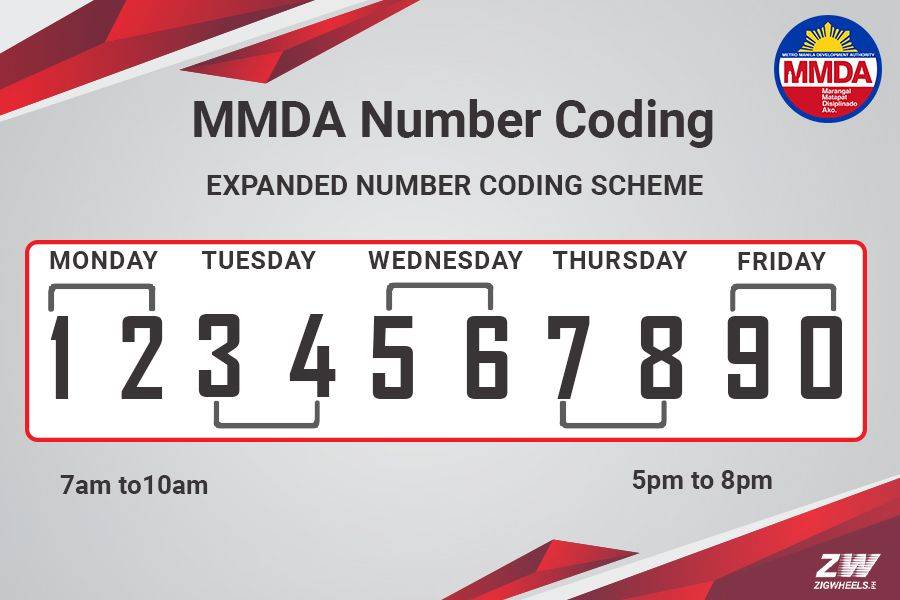
The Number Coding scheme was in effect as of August 15, 2022 with morning and evening coding hours of 7:00 AM to 10:00 AM, and 5:00 PM to 8:00 PM from Mondays to Fridays, excluding weekends and holidays.
The designated window hours for coded cars are between 10:01 AM to 4:59 PM and 8:01 PM to 6:59 AM of the next day.
MMDA's infographic explains the revised number coding scheme in detail.
Which roads in Metro Manila have number coding in effect?
Roads covered by the number coding include
- EDSA
- C5
- C6
- South Luzon Expressway
- Shaw Boulevard
- Roxas Boulevard
- Ortigas Avenue
- Marcos Highway
Some Metro cities implement the number coding on their own thoroughfares.
Who are exempted from the number coding?
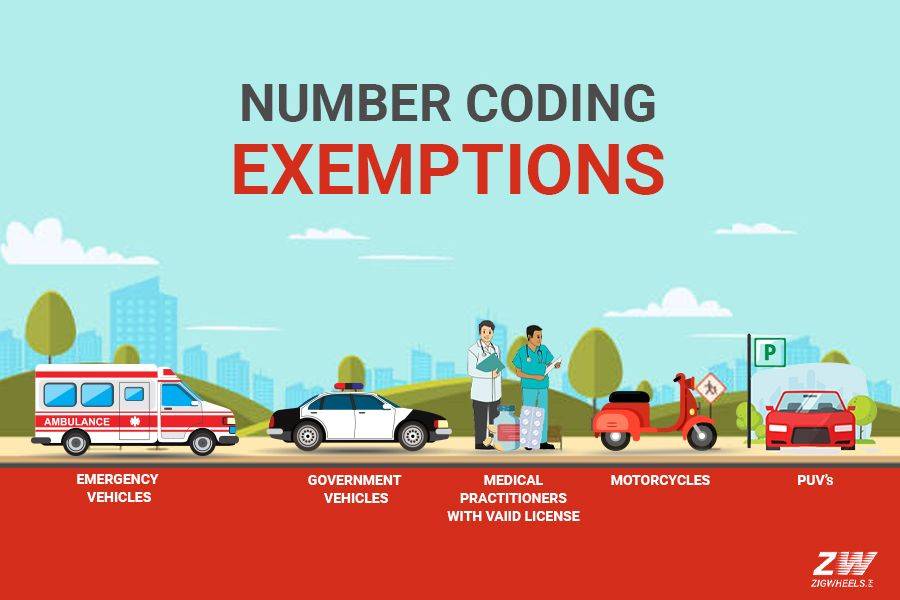
As the number coding applies to private vehicles, transport network vehicle service (TNVS) units, public utility vehicles (PUVs), commercial vehicles transporting essential goods, and utility vehicles like garbage trucks are exempted from the rule.
Motorcycles are also exempted, as are vehicles carrying senior citizens in Makati City, as long as the senior citizens present their Blu Card from the city.
Persons with disabilities (PWDs) and business owners may apply for coding exemption from the MMDA.
How can I apply for the exemption?
In its website, MMDA said it requires coding exemption applicants to submit the following documents:
- Letter of request.
- Photocopy of vehicle’s OR/CR.
- Medical certificate (for PWDs).
Applications are done at the Office of the Chairman of the MMDA, at the agency's Main Building located at EDSA cor. Orense Street in Guadalupe, Makati City.
As for fees, private citizens and business owners need to pay P1,000 for their application.
Once approved, motorists can be exempted from the MMDA number coding either between January 1 to June 30, or July 1 to December 31.
Number coding reinstated in August 15, 2022
MMDA began the reimplementation of the Unified Vehicular Volume Reduction Program (UVVRP) on Monday, August 15, 2022 to help ease the traffic in the metro during window hours.
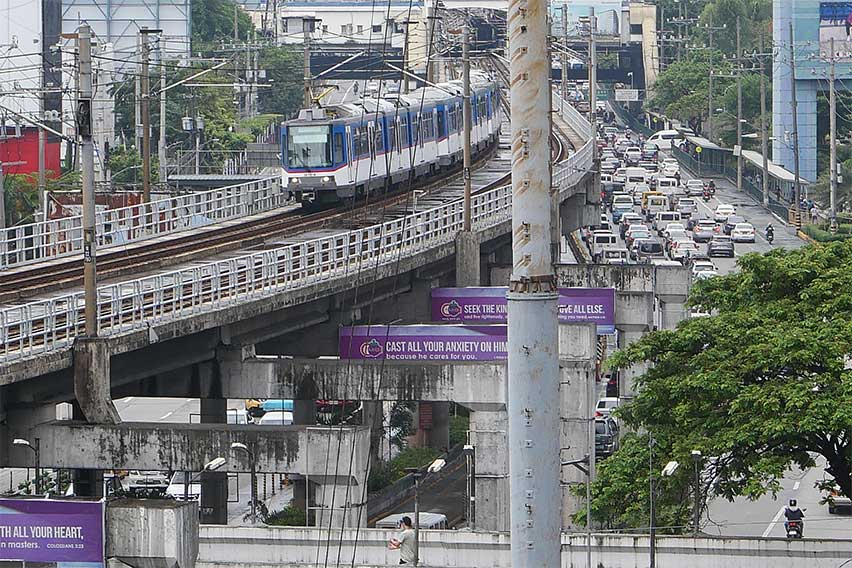
What time is the start of coding in Metro Manila?
Vehicles with license plates that end in certain digits have not been allowed on Metro Manila roads from 7 a.m. to 10 a.m. and 5 p.m. to 8 p.m. on weekdays, except holidays.
For its part, Makati City resumed on March 16 its own number coding scheme that is effective from 7 a.m. to 7 p.m without window hours.
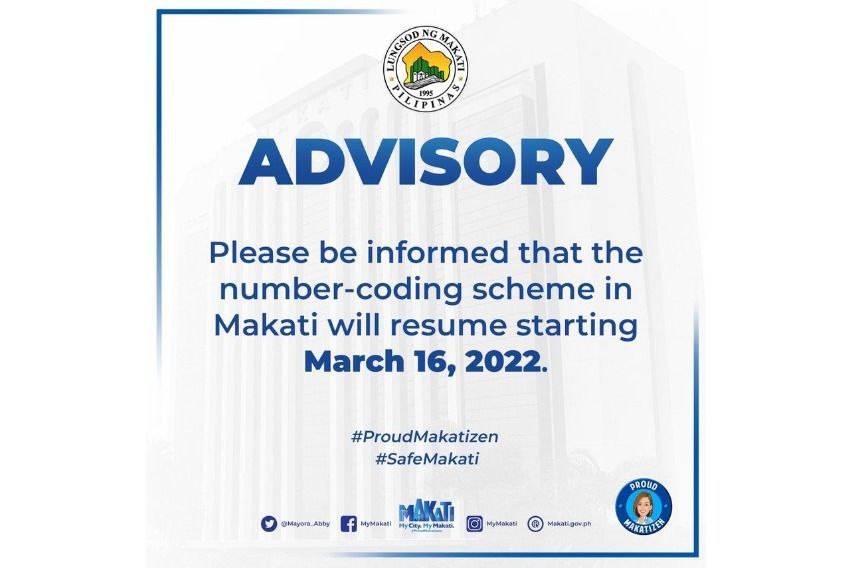
Number coding rules in the NCR
Number coding in Alabang
Except for the following roads, which employ the MMDA's coding scheme, Muntinlupa City lacks a number coding scheme.
- Ayala-Alabang National Road.
- Alabang-Zapote Road corner Buencamino and North Gate.
If you break the law of Muntinlupa City, you will be fined P500 on your first infraction, P750 on your second, and P1,000 on your third and subsequent infractions. Be aware that some laws might have changed since these penalties and coding techniques were used before the outbreak.
Number coding in Makati City
Makati City, also known as the Central Business District of Metro Manila, does not have window hours, hence the number coding regulation starts to apply from 7 a.m. to 7 p.m. Infringers shall be penalized with a standard fine of P300.
However, as mentioned in the Makati ordinance, cars transporting senior citizen Blu Card holders as drivers or passengers, those engaged in official duties, and those involved in medical emergencies are excluded in Makati City.
Number coding in Quezon City
With window hours of 10:01 AM to 4:59 PM, Quezon City now adheres to the MMDA's coding scheme of 7 AM to 10 AM and 5 PM to 8 PM.
Number coding in Pasig City
Pasig City adheres to the MMDA's coding system of 7 AM to 10 AM and 5 PM to 8 PM with window hours from 10:01 AM to 4:59 PM since it is a part of Metro Manila.
Number coding in Pasay City
Remember that Pasay has a number coding scheme — from 7 AM to 10 AM and from 5 PM to 8 PM with a window period of 10 AM to 4 PM — if you live there and your car is coding.
Major roads — including Domestic Road, Ninoy Aquino Avenue, MIA Road, Sales Road, portions of Airport Road, and portions of Buendia (Gil Puyat) — however, are exempt from this classification.
Number coding in Paranaque
They adhere to the standardized coding system established by the MMDA in Paranaque City. Accordingly, coding occurs from 7 AM to 10 AM and from 5 PM to 8 PM, with a window time of 10 AM to 4 PM. This comes after the reintroduction of the coding system in August of 2022.
Number coding in Mandaluyong City
Mandaluyong City has adopted the MMDA's code system as of August 2022. This indicates that there is coding from 7 AM to 10 AM and from 5 PM to 8 PM, with a window time of 10 AM to 4 PM.
Number coding in Manila City
The large city of Manila is divided into a number of zones that are accessible to automobiles. As a result, while other Manila roads are scheduled to follow the 7 AM to 10 AM and from 5 PM to 8 PM coding periods with a window period of 10 AM to 4 PM — certain areas apply the number coding method without window hours.
Number coding in Valenzuela City
As of August 2022, when the MMDA reimplements its coding scheme, the number coding scheme is in place in Valenzuela City and runs from 7 AM to 10 AM and from 5 PM to 8 PM, with a window period of 10:01 AM to 4:59 PM.
These highways are affected by this initiative.
- MacArthur Highway
- Maysan – Paso De Blas – Bagbaguin Road
- Karuhatan – Gen. T. De Leon Road
- Gov. I. Santiago Road (Malinta to Tatawid)
- Mindanao Avenue (Barangay Ugong)
- East and West NLEX Service Road
- T. Santiago Road
- Sapang Bakaw (Lawang Bato) - Punturin – Bignay Road
Number coding in Taguig City
The number coding system is only partially applicable to Taguig City. However, the coding technique is still used in a few specific places, especially the Manuel L. Quezon Avenue and East Service Road that are national roadways inside its borders.
The coding is not implemented in Bonifacio Global City (BGC).
Number coding in San Juan City
The number coding system that will begin at 7 a.m. to 7 p.m. is now being tested by the City of San Juan. Restricted cars are permitted to wander during window hours, which start at 10 a.m., along with its corresponding timeframe, to 3 p.m.
Number coding in Caloocan City
Drivers in Caloocan City adhere to the city's number coding system, which operates during the customary coding hours of 7 AM to 10 AM and 5 PM to 8 PM.
Samson Road has been exempted from the 10 AM to 4 PM window hour regime, unlike other roads in the Caloocan area. This indicates that throughout the duration of the number coding system, prohibited vehicles are not permitted to pass through the specified location.
Be aware that some laws may have changed since these penalties and coding systems were used before the outbreak.
Final Words
Whether the number coding rule is effective, though, is still up for debate. What we do know, however, that number coding is here to stay — for now.
Photos and images from Metropolitan Manila Development Authority, Makati City, Roy Robles, and Kap Maceda Aguila
Related:
MMDA suspends number coding on Bonifacio Day, Nov. 30
Number coding back in Metro Manila starting Aug. 15
Sell your car at the best price
 Verified and genuine buyers
Verified and genuine buyers
Trending & Fresh Updates
- Latest
- Popular
You might also be interested in
- News
- Featured Stories
Featured Cars
- Latest
- Upcoming
- Popular
Latest Car Videos on Zigwheels

Car Articles From Carmudi
- journal
- advice
- financing
- insurance








